Hadong Tea Museum (하동야생차박물관)
9.1Km 2022-08-05
571-25, Ssanggye-ro, Hadong-gun, Gyeongsangnam-do
+82-55-880-2956
The Hadong Tea Museum is located at the foot of Jirisan Mountain in Hadong, Gyeongsangnam-do. It aims to promote the tea culture of the area, the first tea producer in the nation, while advertising the quality and superiority of Hadong green tea. The center is located adjacent to the tea farming area and Ssanggyesa Temple, one of the most famous tourist attractions in Korea.
The museum features an exhibition hall explaining the history and culture associated with Korean tea, and an experience hall where visitors can enjoy hands-on programs like making tea and learning traditional tea etiquette, as well as a shop selling high-quality tea produced in the region. Every year, the museum also hosts the Hadong Wild Tea & Culture Festival every year.
Hadong Tea Cultural Center (하동야생차문화센터)
9.1Km 2025-09-01
571-25, Ssanggye-ro, Hwagae-myeon, Hadong-gun, Gyeongsangnam-do
The Experience Hall of the Hadong Tea Museum is located in Unsu-ri, Hwagae-myeon, Hadong-gun, Gyeongsangnam-do. This annex of the museum is dedicated to hands-on programs. Main programs include a tea ceremony, a tea snack session (three-colored, sesame, and bean varieties), green tea seed accessory making, tea-leaf dyeing, make-your-own matcha class, tea-leaf picking, tea roasting, and a Doncha (compressed tea) experience.
Hadong Ssanggyesa Temple (쌍계사(하동))
9.9Km 2024-03-08
59 Ssanggyesa-gil, Hadong-gun, Gyeongsangnam-do
Ssanggyesa Temple was founded on the southern foothills of Jirisan Mountain in 722 during the reign of Silla King Seongdeok. The temple is famous for the 6-kilometer stretch of cherry blossom trees that bloom each spring. The temple was originally called Okcheonsa Temple, but was changed to the current Ssanggyesa Temple in 887. The current temple buildings were all built in 1632, after having been burned down during the Imjin War (1592-1598). The temple grounds and nearby area feature many historic and beautiful attractions, including Burilpokpo Falls and a large tea plantation.
Burilpokpo Falls (불일폭포)
10.0Km 2024-02-08
103 Mogap-gil, Hwagae-myeon, Hadong-gun, Gyeongsangnam-do
Situated 720 meters above sea level, Burilpokpo Falls stands as the tallest waterfall on Jirisan Mountain, boasting a x_height of 60 meters and a x_width of 3 meters. It features a distinctive two-tier structure, with the enchanting Yongchumot and Hangmot Ponds nestled below, adding to its profound natural allure. Conveniently located just 3 kilometers from Ssanggyesa Temple, it's an ideal spot to visit following a trip to the temple.
Baegunsan Mountain Donggokgyegok Valley (백운산 동곡계곡)
10.1Km 2021-04-23
154, Yaksujedan-gil, Okryong-myeon, Gwangyang-si, Jeollanam-do
+82-61-797-3333
Donggokgyegok Valley is one of four large valleys on Baegunsan Mountain. The valley opens up towards Gwangyang, with the waters of Dongcheon Stream flowing into Gwangyangman Bay. Donggokgyegok Valley is wide, making it convenient for transportation, and perfect for a family getaway during the holidays. Located along Hanjae Pass between the mountain summit and Ttoaribong Peak on the west side, the valley is also sometimes called Dapgoksimni. The valley stretches a distance of 10 kilometers and is especially beautiful in fall when surrounded by vibrant autumn foliage. Donggokgyegok Valley is a protected nature reserve with over 900 various species of vegetation.
Samseonggung (삼성궁)
10.3Km 2024-02-21
86-15 Samseonggung-gil, Cheongam-myeon, Hadong-gun, Gyeongsangnam-do
Samseonggung is a Taoist shrine located at 850 meters above sea level on Jirisan Mountain. It serves as a spiritual hub for practicing Sinseondo, embodying traditional Korean culture. In 1983, Kang Min-ju (Taoist Priest Hanpul), along with his disciples, restored the sodo, a sacred altar from the Gojoseon period. This shrine stands as a revered sanctuary, honoring the primal ancestors of the Korean people: Hwanin (Lord of Heaven), Hwanung (Supreme Divine Regent), and Dangun (legendary founder of Gojoseon).
Baegunsan Eochigyegok Valley (백운산 어치계곡)
10.3Km 2021-06-01
531, Baekhak-ro, Gwangyang-si, Jeollanam-do
+82-61-797-3333
Eochigyegok Valley, located in Eochi-ri, Jinsang-myeon, is 7 kilometers long, and is a valley with clear water flowing through the lush forest with rocks in all sizes that provide a resting spot. In particular, it is home to Orodae Rock, cool enough to form dew even in the middle of the day and Gusipokpo Falls with a legend of a flying horse.
The valley is located ten minutes away from the Seomjingang River Maehwa Village, and plum trees cover the valley in spring with plum blossoms. In autumn, the countless oak trees in the forest become an acorn factory for its habitats. Baegunsan Eochigyegok Valley is worth visiting at any time of the year and provides various agricultural products to local residents. Orodae Rock, located in the uppermost stream, refers to a rock that looks like a large courtyard. An inscription remains, saying that it is named Orodae because it is cool enough to form dew even in the midday of the summer. Legend says that Gusiso Pool at the base of Gusipokpo Falls is so wide that it will not dry up even in a draught.
Yeoyeo Sikdang (여여식당)
11.4Km 2025-01-22
92 Gyeongseo-daero, Hadong-eup, Hadong-gun, Gyeongsangnam-do
055-884-0080
If you want to get the basics of jaecheop (Freshwater Marsh Clam) dishes in the Hadong-eup center area, head to Yeoyeo Sikdang. This restaurant serves a rich bowl of jaecheop-guk with a good selection of side dishes and a bowl of steamed rice.
Buheung Jaecheop Sikdang (부흥재첩식당)
11.4Km 2025-01-22
98 Gyeongseo-daero, Hadong-eup, Hadong-gun, Gyeongsangnam-do
055-884-3903
Like many other restaurants in Hadong, this restaurant serves freshwater marsh clam dishes. The restaurant is most famous for jaecheophoe (raw freshwater marsh clam). This dish is served on a bed of pear, carrot, cabbage, cucumber, and other vegetables tossed with sweet and sour red chili paste. Another popular menu is the Modum Jeongsik (assorted freshwater marsh clam set menu), which has jaecheopguk, jaecheopjeon, and jaecheophoe.
Hadong Pine Forest (하동송림)
11.6Km 2021-07-21
2107-8, Seomjingang-daero, Hadong-gun, Gyeongsangnam-do
+82-55-880-2651
Hadong Pine Forest grows along the Seomjingang River near Seomjingang Iron Bridge. It was planted in 1745, during the 21st year of Joseon King Yeongjo’s reign, to block wind and sand. Now, it is one of the best pine groves in Korea.
In a total area of 26,000 ㎡ are approximately 750 old-growth pine trees. Along with the white sand on the riverside, the forest provides picturesque scenery when seen from Hasangjeong Pavilion within the forest. The forest park is used as a venue for folk games and major events hosted by the local government. There are sports facilities and recreational facilities teenagers, children, and families can enjoy, attracting many locals and tourists.

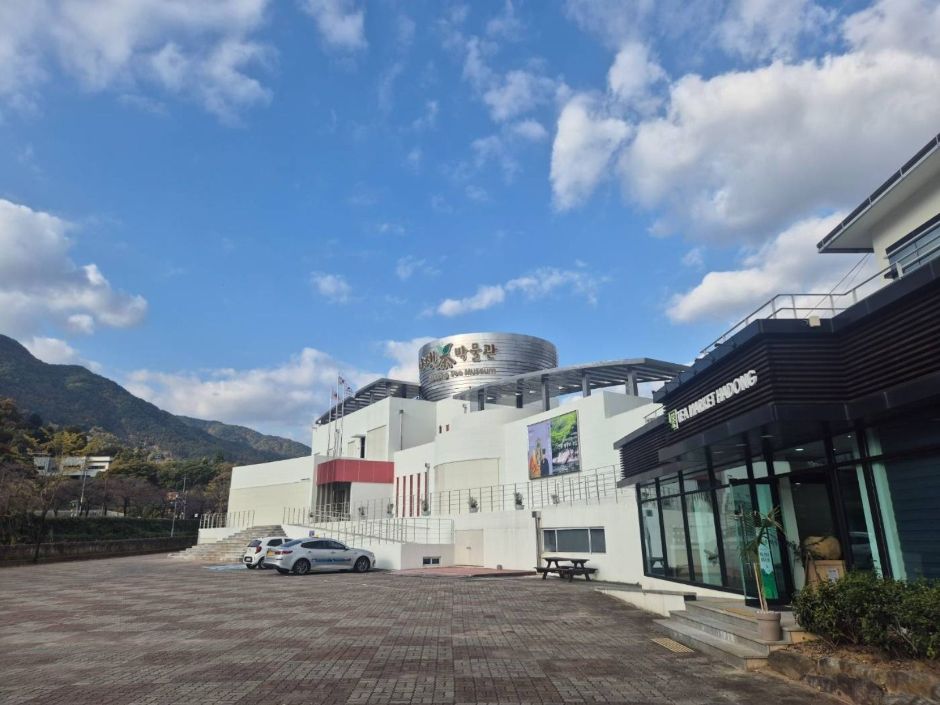
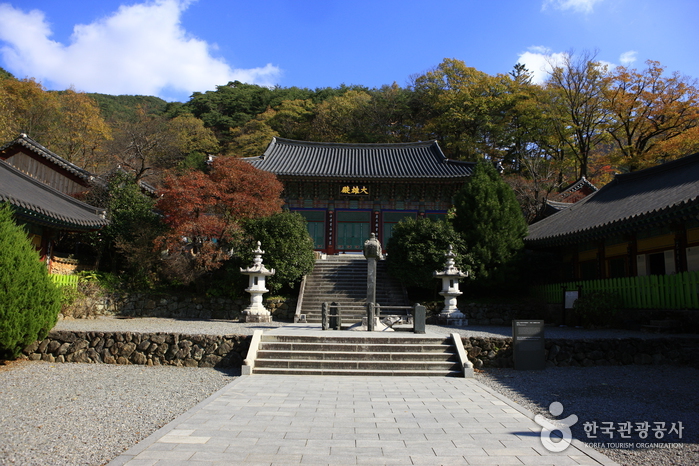
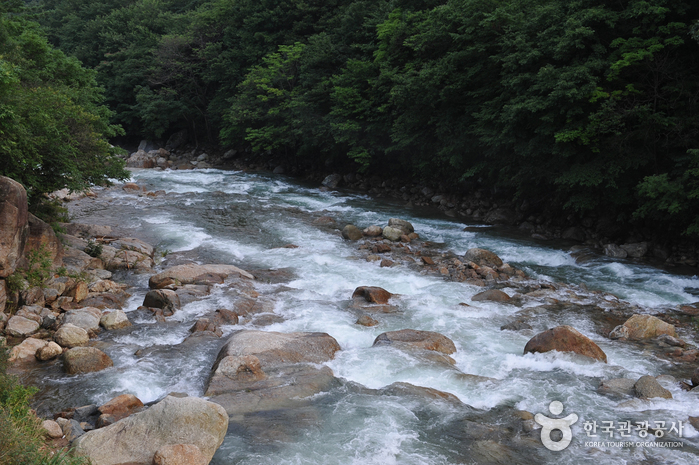
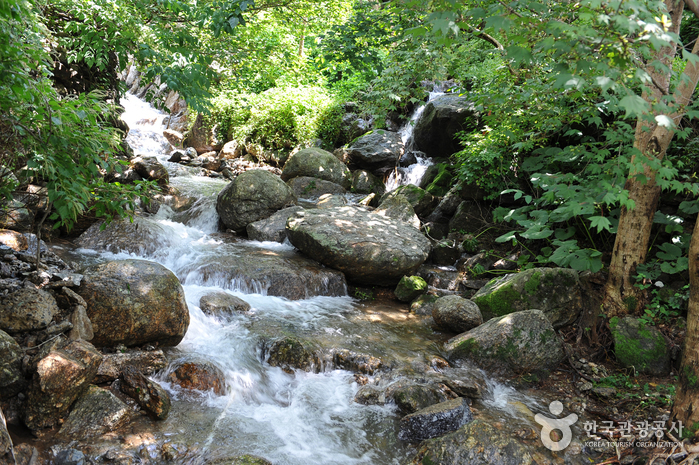
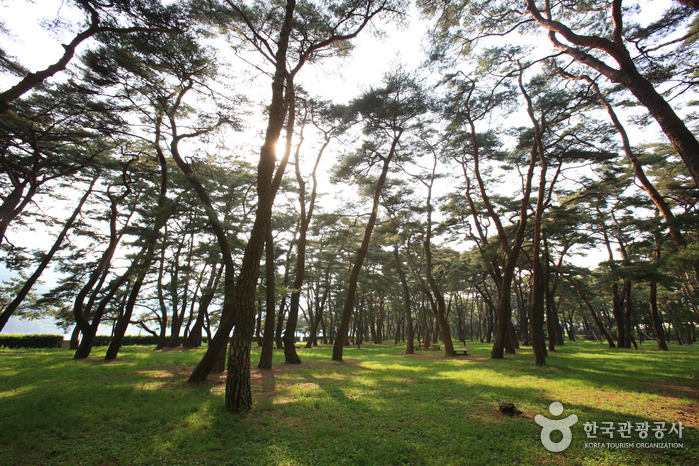
 English
English
 한국어
한국어 日本語
日本語 中文(简体)
中文(简体) Deutsch
Deutsch Français
Français Español
Español Русский
Русский